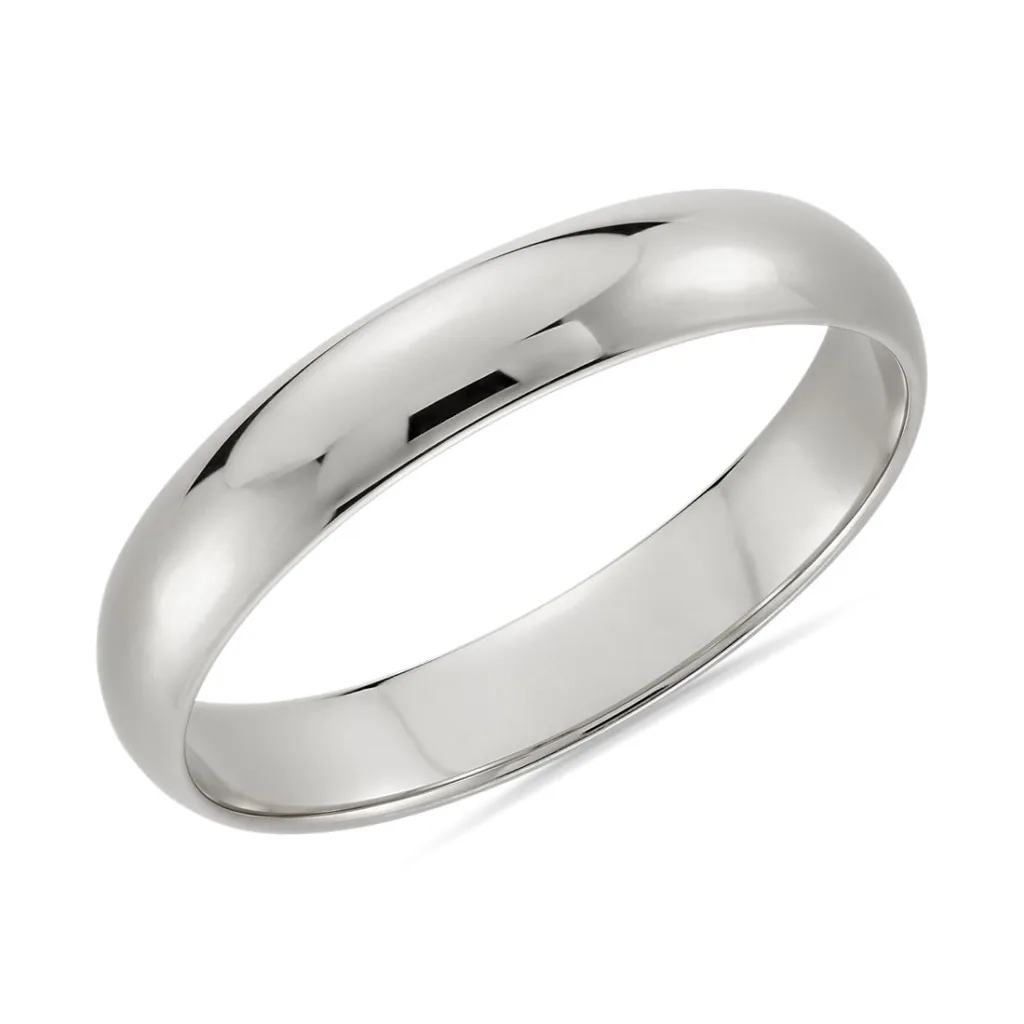White gold is a popular alternative to traditional yellow gold for jewelry such as rings, necklaces, and bracelets. It is a beautiful, silvery-white metal that adds elegance and sophistication to any piece of jewelry. But how is white gold made, and what are the characteristics of this precious metal?
White gold is not found naturally in the earth. Instead, it is created by combining pure gold with other white metals such as nickel, palladium, silver, or platinum. The white metal is added to the gold to create an alloy that has a white or silvery appearance. The amount of gold in the alloy is measured in karats, with 18 karat white gold being the most common.
To make white gold, the pure gold is first melted down in a furnace. Once melted, the white metal is added to the gold in precise amounts to create the desired alloy. The mixture is then heated and stirred until it is thoroughly combined. The resulting alloy is then cooled and shaped into the desired form, such as a ring or necklace.
One of the main characteristics of white gold is its durability. When compared to yellow gold, white gold is much harder and more scratch-resistant. This makes it an ideal option for jewelry that is worn on a daily basis. However, because white gold is an alloy, it can be prone to tarnishing over time. To combat this, white gold jewelry is often coated with rhodium plating, which gives it a bright, reflective finish.
While white gold is a popular choice for jewelry, it is important to note that it can cause skin irritation in some people. This is because many white gold alloys contain nickel, which is a common allergen. To avoid this, it is important to choose a white gold alloy that is hypoallergenic or to opt for platinum, which is a naturally hypoallergenic metal.
White gold is a beautiful and durable alternative to traditional yellow gold. It is created by combining pure gold with other white metals to create an alloy that has a white or silvery appearance. While it is a durable metal, it can be prone to tarnishing and may cause skin irritation in some people. white gold is a popular choice for jewelry due to its beauty and versatility.

Is White Gold Naturally Occurring?
White gold is not found naturally as it is a man-made metal. It is created by mixing pure gold with white metals such as silver, nickel, manganese, platinum, or palladium. The proportion of these metals can vary depending on the desired shade and properties of the white gold. The resulting alloy has a silvery appearance, but it may not be as white as some people prefer. To enhance its color and shine, white gold is often coated in a thin layer of rhodium plating, which is a type of metal that is even whiter than white gold. However, this plating can wear off over time, exposing the underlying metal and causing it to appear yellowish. Therefore, periodic re-plating may be necessary to maintain the bright white color of white gold jewelry.
Is White Gold Really Made of Gold?
White gold is a type of gold. It is an alloy made by mixing pure gold with other metals such as nickel, zinc, or palladium. The other metals are added to change the color of the gold from its natural yellow color to white. The most common white gold alloy is made up of 75% gold and 25% nickel and zinc. White gold is usually stamped with a karat mark to indicate the amount of pure gold it contains, such as 18 karat, which means it is 75% pure gold. So, even though white gold is not pure gold, it still contains gold and is considered a type of gold.
Comparing Platinum and White Gold
When it comes to choosing between platinum and white gold, it ultimately comes down to personal preference. However, thee are some differences between the two that may influence your decision.
Durability-wise, both platinum and 14K white gold are durable enough for everyday wear and significantly more durable than yellow gold. While white gold is harder than platinum and scratches less, platinum is stiffer and does a better job of holding the diamond in place for the long term.
Appearance-wise, platinum tends to have a more natural white color, whereas white gold is often coated with rhodium to achieve a brighter white hue. However, over time, the rhodium plating may wear off and require re-plating.
In terms of cost, platinum is generally more expensive than white gold due to its rarity and density. However, white gold may require more maintenance costs over time due to the need for rhodium plating.
Both platinum and white gold are great choices for engagement rings or other jewelry pieces. It ultimately comes down to your personal preference and budget.
Creating White Gold Jewelry
White gold is made by combining pure gold with other metal alloys such as palladium, silver or nickel. This is typically done by melting the metals together in a crucible until they are fully mixed. The resulting metal alloy is then cooled and shaped into the desired form of jewelry.
Once the white gold has been formed, it is often plated with rhodium. Rhodium is a precious metal in the same category as platinum and is known for its bright white color. The plating process involves immersing the white gold jewelry in a solution containing rhodium and then applying an electric current to bond the rhodium to the surface of the jewelry.
This process of combining gold with other metal alloys and then plating it with rhodium results in white gold jewelry with a silvery-white sheen and warm, shimmering undertones. It is a popular choice for wedding rings and other fine jewelry due to its beauty and durability.
Conclusion
White gold is a popular and beautiful alternative to traditional yellow gold. It is created by mixing pure gold with white metals like silver, nickel, and platinum to achieve its silvery appearance. Additionally, white gold is often coated in rhodium plating for added shine and durability. Compared to platinum, white gold is harder and scratches less, but platinum is stiffer and holds diamonds in place better for the long term. However, both materials are durable enough for daily wear and significantly more durable than yellow gold. white gold is a stunning choice for jewelry lovers seeking a timeless and elegant look.












